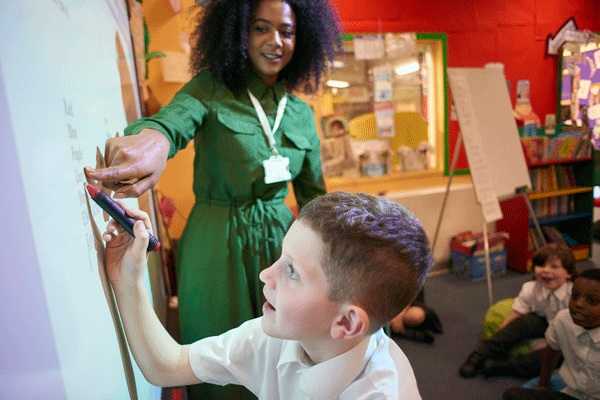Posted Tuesday, 20 May 2025
Scitech to spark science curiosity across the Kimberley
Scitech is embarking on an epic tour across the Kimberley, visiting 26 remote community schools.
Lene Voorn realises her Year 2 students are learning much faster than she thought

Hi, my name is Lene Voorn and this is my second blog post of the year.
When I look back at the journey I took my class on, I feel a sense of enthusiasm and pride. Enthusiasm for where this program has taken my teaching and pride for the outstanding growth I have seen in my Year 2 students.
For our latest lesson, I presented the problem of ‘The Long Table Lunch’:
A restaurant makes a super-long table by placing 4 normal tables end to end for a big party.
Each normal table usually seats 6 people around it.
How many people can sit down to eat at the long table?
I studied the problem and thought about the possible solutions the class would present. As we had just begun the concept of multiplication, I anticipated most of the class would default to addition or counting to calculate the number of people around the table.
The students were paired using a random pop stick pick. They were very quick to get to their boards and begin the problem. After a few moments of watching and walking around of the class, I realised the pairs were all making the same mistakes. I stopped the class and asked them to all draw the table of six at the top of the board. I reiterated that each long edge of the table sat only two chairs and each end sat one. Once this was clarified, the earnest problem solving began.
One pair had come up with the solution 5+5+5+5=20 They had worked out that one end space was taken up by a table but then assumed each other table also sat 5.
I asked them to count the chairs they had correctly drawn around their picture and they counted eighteen. They then pointed to the first solution and exclaimed “Oh this! It’s wrong. It should be 5+4+4+5=18.”
I asked “Is there another way we could write this using ‘groups of’?”
The two students began to talk about ‘groups of’ and suddenly there was a lightbulb moment when one of the students excitedly explained to his partner it was two groups of five and two groups of four. He wrote his solution on the board as 2×5=10 and 2×4=8, resulting in 10+8=18 chairs.
Another pair had come up with two different answers and one student had crossed out her answer. I asked her about it, and she explained “When we didn’t match, we each explained how we came up with our answers. I added 6+6+6+6 and it equalled 24. My partner explained that two of the tables would lose both end places so it would be 5+4+4+5=18. So I changed my thinking and agreed the answer was eighteen.”
A third pair of students had drawn the solution and counted by twos. I asked them how they could write that mathematically. One of the students wrote 2+2+2+2+2+2+2+2+2=18, excitedly his partner said “It’s add two nine times so we could write it nine groups of two equals eighteen!”
Each one of these groups presented their thinking to the class. With thoughtful questioning, they were able to explain their board and thinking to the class. The class members who were listening, began to ask questions from the presenters and they were all very attentive to each other during these lessons. As we had only spent a week working with multiplication, I was blown away by how they were all using it as part of their solutions. And I realised I had underestimated their abilities to quickly apply a new concept to a problem.
My teaching partner Kate Shellam and I have also presented successful parent and teacher workshops about the Alcoa Champions of Maths program at Baldivis Primary School. In each of the workshops there were very nervous adults, concerned because we were doing maths. Each workshop started with a bit of nervous tension in the room but by the end, it was amazing to see the adults engaged in deep discussion. There was even laughter! One of my student’s parents said “I wasn’t going to come because I’m really bad at maths but this was fun. No wonder my kid loves doing maths this way. Talking about it and pulling out the thinking, makes it really clear. What a great way to learn!”
One of my biggest ‘aha!’ moments was when I came to the realisation that as much as this is a student-centred learning model and we want the students to reach the solution through good questioning and directing, there were still perfect moments for explicit teaching and modelling to aid the process. The thinking, discussion and shared learning by my students made me appreciate just how much they are capable of when it comes to mathematical skills, proficiency and reasoning.
It really is a wonderful teaching/learning method to use. It has been a fantastic experience to be a part of the Alcoa Champions of Maths program and it is certainly something I will carry throughout my teaching. Working with the other teachers in this network has given me different insights to the program which has also influenced my teaching.
Thank you Shyam, Alcoa and Scitech for this tremendous year of learning. I am grateful for having this opportunity and excited to see it influence my teaching.
Upon clicking the "Book Now" or "Buy Gift Card" buttons a new window will open prompting contact information and payment details.